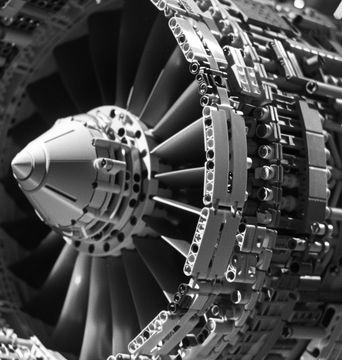AVIATION GIANTS UNITE FOR FUTURE OF FLIGHT: PIONEERING HYBRID-ELECTRIC AIRPLANES TARGETING NET-ZERO CARBON EMISSIONS BY 2050

The aviation industry is undergoing a profound transformation, as leading companies adapt their technologies and operations to meet the critical target of net-zero carbon emissions by 2050. This transition, while imperative for addressing climate change, also presents significant challenges, requiring not just advancements in airplane technology but also a radical shift in energy sourcing.
Leading corporations in the aviation field, including engineering giants like Airbus, Boeing, and GE Aerospace, have set forward ambitious plans to reduce emissions. Key to these strategies is the transition from traditional fuel sources to sustainable alternatives that can power the aircraft of the future.
Central to this as-yet-unseen airplane revolution is a research and development collaboration between NASA, GE Aerospace, and Boeing's Aurora Flight Sciences. The partnership aims to deliver a hybrid-electric propulsion system, designed for commercial airplanes carrying between 150-180 passengers. This collaboration brings together expertise in space technology, the production of advanced engines, and next-gen flight systems, promising a future where flying does not equate to an environmental gamble.
However, the path to designing and manufacturing hybrid-electic airplanes is fraught with considerable challenges unique to aviation. These mainly relate to maintaining the standards of safety and reliability while curbing the weight - a critical determinant of fuel efficiency. Recent successes in testing under simulated flight conditions suggest that significant progress is being made on these fronts, as the project team steadily work towards flight-readiness.
The integration process of this innovative propulsion technology within commercial aircraft is already underway. Aurora Flight Sciences has been modifying a Saab 340 aircraft for trial flights, which are scheduled to begin in the mid-2020s. These tests will be an integral step towards evaluating the performance of the newly-designed hybrid-electric propulsion system in real-world flight scenarios.
Looking beyond the horizon, the long-term vision of the industry does not stop at hybrid propulsion. Greater levels of electric power are expected to be crucial to the next era of aviation, complemented by increased use of alternative fuels, such as sustainable aviation fuel (SAF) and possibly hydrogen. Switching to such fuels while maintaining, if not exceeding, the current standards of efficiency, safety, and reliability comes as a critical milestone in the journey towards carbon-neutral flight operations.
The joint efforts of NASA, GE Aerospace, and Boeing serve a dual purpose: advancing the future of flight towards an electric future and fulfilling the broader environmental objective of achieving net-zero emissions. If this vision is realized, then the age-old dream of mankind—flight—may continue without costing the earth.
To switch to sustainable modes of flying, the aviation industry must overcome significant challenges and embrace a wave of technological evolution. But the combined capabilities of these industry leaders, powered by their shared vision and dedication, give us hope that the skies of tomorrow will be not just busier, but cleaner too. It's a future where the joyful act of flying won't leave an ecological footprint. And that's a future worth working towards.